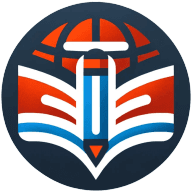8 the Debate On Online Education: Effective Programs and Insights
Online education has become a hot topic in recent years, sparking debates about its effectiveness and potential. This article delves into various aspects of digital learning, from personalized tutor-matching to interactive writing programs, drawing on insights from experts in the field. By exploring innovative approaches like hybrid models and asynchronous modules, we'll uncover how online education is reshaping the landscape of learning across various disciplines.
- Reimagining Education for Modern Families
- Personalized Tutor-Matching Enhances Online Learning
- Interactive Elements Boost Digital Course Effectiveness
- Global Freshman Academy Lowers Educational Barriers
- Structured Evaluation Improves Online Language Teaching
- Hybrid Approach Elevates Dental Continuing Education
- Asynchronous Modules Revolutionize Medical Training
- Interactive Writing Program Narrows Online-Campus Gap
Reimagining Education for Modern Families
The discussion about online education is not about whether it is a legitimate way to educate students, but rather how it can fulfill an educational role in a way that's as human as possible. Critics of online learning often consider it impersonal, restrictive, and unresponsive to students' needs. However, here at Legacy Education, we see it as an opportunity to engage more students in a more flexible and connected way.
One example of this flexibility can be seen in the structure of Legacy. The school is accredited through the Western Association of Schools and Colleges, but the flexibility component is where we really stand out. Legacy Education families may choose to participate in live group classes or instruction, one-on-one instruction, or self-paced instruction, whichever is most beneficial for their child.
I have a student who is creative and is an athlete touring constantly. In a traditional model, he would struggle to manage the rigors of school. With Legacy, he can join live classes from anywhere in the world, whether they are in the student's local time zone or not. He is able to work with certified teachers and remain engaged through virtual clubs and mentorship. The blend of community and continuity is powerful; it facilitates movement forward without losing a sense of connection.
What I have come to learn about quality online education is that it's not about trying to replicate the traditional classroom. It's about reimagining school so that it fits the lives of modern families. When done with both heart and structure, online learning becomes more than just an alternative. It becomes a lifeline.

Personalized Tutor-Matching Enhances Online Learning
Online education offers tremendous potential to democratize learning, though it must be implemented thoughtfully to be effective. At UrbanPro, we developed a personalized tutor-matching system that addresses one of the key challenges in online education: customization to individual learning needs. Our approach breaks from traditional one-size-fits-all models by using technology to connect students with the right instructors for their specific requirements and learning styles. This personalized methodology has proven that online learning can be both accessible and highly effective when it focuses on the unique needs of each student.

Interactive Elements Boost Digital Course Effectiveness
The debate surrounding online education often overlooks the fact that its effectiveness largely depends on design and delivery. Online learning is not inherently better or worse than traditional classrooms; rather, its success is determined by how well the program engages students and supports different learning styles.
For example, during the pandemic, I enrolled in a professional certification program in digital marketing that was fully online. What made it so effective was not just the recorded lectures, but the combination of interactive case studies, peer discussions, and live Q&A sessions with instructors. The program even included real-world projects where we applied strategies to mock campaigns, which helped reinforce the lessons.
This experience demonstrated to me that when online education combines flexibility with practical, hands-on elements, it can be just as impactful—sometimes even more so—than in-person learning.

Global Freshman Academy Lowers Educational Barriers
The debate often frames online education as either a replacement or a compromise, yet its strength lies in complementing traditional instruction. The most effective programs acknowledge that flexibility is the primary advantage while community and accountability remain the biggest challenges.
A strong example is Arizona State University's Global Freshman Academy. It allowed students worldwide to enroll in university-level courses with the option to pay for credit only after successful completion. The model reduced financial risk, widened access, and maintained rigorous standards by using adaptive assessments and structured peer interaction.
What made it effective was not the digital delivery alone, but the combination of open entry, measurable outcomes, and a clear pathway into a degree program. That structure attracted learners who might otherwise hesitate to commit, proving that online education succeeds when it lowers barriers without lowering expectations. It reframed distance learning as an on-ramp rather than a substitute.

Structured Evaluation Improves Online Language Teaching
Online education offers tremendous flexibility for learners, though it requires thoughtful implementation to ensure engagement and quality. During my time with the French Teachers Association, we developed a structured evaluation process for online teaching tools that involved tracking student engagement metrics and collecting comprehensive feedback from teachers during a designated testing period. This methodical approach allowed us to identify which platforms genuinely enhanced language acquisition versus those that simply digitized traditional content. The most successful programs maintained high interaction levels while providing teachers with real-time insight into student progress.
Hybrid Approach Elevates Dental Continuing Education
Online education has value when it avoids trying to replicate a classroom exactly and instead builds around the strengths of digital learning. The debate often focuses on whether it is "as good as" traditional instruction, but the more relevant question is whether the format matches the skill being taught. A strong example is the way some continuing education programs for dental professionals have shifted to modular video instruction paired with live virtual case reviews. The asynchronous modules allow learners to absorb technical content at their own pace, while the real-time discussions create accountability and nuanced feedback. This hybrid approach proved highly effective during pandemic restrictions and has remained popular because it respects professionals' schedules without sacrificing interaction. The lesson is that online education works best when it is deliberately designed for flexibility and engagement rather than treated as a direct substitute for in-person lectures.

Asynchronous Modules Revolutionize Medical Training
The debate often focuses too narrowly on whether online education can replace in-person instruction, when the more relevant issue is how digital tools expand access and complement traditional learning. An effective example is the use of asynchronous modules for continuing medical education. Programs that allow clinicians to review case studies, complete simulations, and take assessments at their own pace have dramatically improved participation. One platform, in particular, offered interactive patient scenarios where providers made diagnostic choices and immediately saw outcomes based on their decisions. Completion rates and knowledge retention exceeded those of comparable in-person seminars because the format fit seamlessly into demanding schedules. Rather than treating online learning as a lesser substitute, this program demonstrated how thoughtful design can make education more practical and impactful, especially for professionals balancing heavy workloads.

Interactive Writing Program Narrows Online-Campus Gap
The debate often polarizes between viewing online education as a diluted substitute for in-person learning or as a disruptive replacement. In practice, its value depends on design rather than delivery medium. Programs that integrate structured interaction, timely feedback, and clear scaffolding perform far better than those that treat online platforms as repositories of recorded lectures. The key lies in fostering presence—making students feel connected to instructors and peers despite the physical distance.
One effective example is Arizona State University's online first-year writing program. Instead of relying on static content, it combines synchronous workshops, peer review circles, and adaptive writing tools that provide instant feedback on drafts. Completion and progression rates improved notably once these interactive elements were added, narrowing the gap with on-campus outcomes. The success underscores that online education works best when it treats engagement as the central challenge and leverages technology not for convenience alone, but for building community and accountability in a virtual space.



